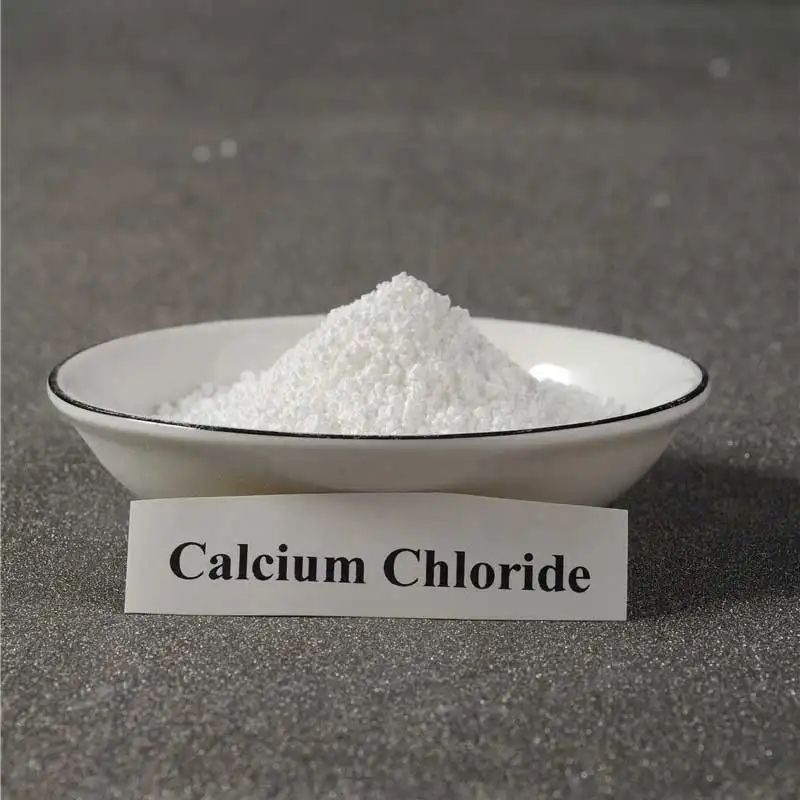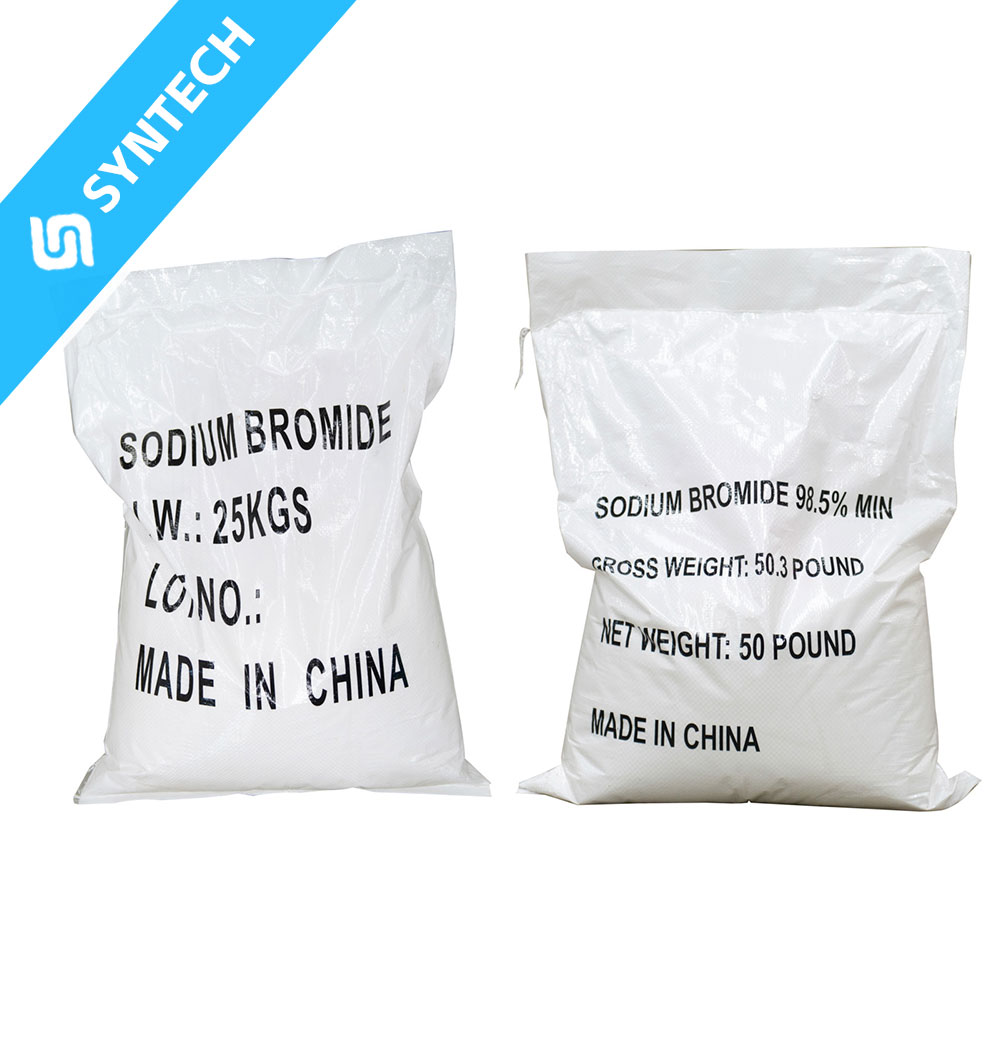Calcium bromide is a typical alkaline earth metal bromide with stable ionic structure, which is widely used in oil drilling, medicine, refrigeration and other fields. Its properties are mainly determined by its ionic composition (Ca²⁺ and Br⁻), and the details are as follows:
1. Physical Properties
Calcium bromide exhibits distinct physical characteristics in terms of appearance, solubility, thermal behavior, and mechanical/electrical properties:
- Appearance and State: Under normal temperature and pressure, anhydrous calcium bromide exists as a white crystalline powder or colorless transparent blocky crystal (lump crystal). Commercial products often contain crystal water (e.g., calcium bromide hexahydrate, CaBr₂·6H₂O), which appears as colorless needle-like crystals. In dry environments, the hexahydrate easily loses crystal water to form anhydrous calcium bromide.
- Solubility: It is highly soluble in polar solvents. At 20°C, its solubility in water is approximately 143 g/100 mL, and the solubility increases significantly with temperature (reaching 285 g/100 mL at 100°C). It is also soluble in polar organic solvents such as ethanol, acetone, and methanol, but insoluble in non-polar solvents like ether and benzene.
- Melting and Boiling Points: Anhydrous calcium bromide has a high melting point of about 730°C (forming an ionic melt when melted) and an even higher boiling point of 1935°C. It remains stable at high temperatures and is not easily decomposed, making it suitable as a heat carrier in high-temperature environments.
- Density and Hardness: The density of anhydrous calcium bromide is 3.353 g/cm³ (at 25°C), classifying it as a high-density solid salt. Its crystal hardness is low, with a Mohs hardness of approximately 2–3, allowing it to be easily ground into powder.
- Hygroscopicity (Deliquescence): It has strong hygroscopicity. When exposed to air, it quickly absorbs moisture and deliquesces—even absorbing water vapor in the air to form a solution. Therefore, it must be stored in a sealed container in a dry environment. Occasionally, it is used as an auxiliary component in desiccants, though its high cost limits practical applications.
- Electrical Conductivity: As an ionic compound, anhydrous calcium bromide does not conduct electricity in its solid state (due to immobile ions). However, in its molten state or when dissolved in water (forming an aqueous solution), Ca²⁺ and Br⁻ ions become free-moving, enabling it to exhibit good electrical conductivity and function as an electrolyte.
- Optical Properties: Pure anhydrous calcium bromide crystals are transparent and have high transmittance for visible light. However, impurities (e.g., iron ions) may cause it to appear pale yellow or grayish white, reducing its transparency.
2. Chemical Properties
The chemical properties of calcium bromide are determined by its constituent ions (Ca²⁺ and Br⁻), and it is generally characterized by high stability and mild reactivity:
- Thermal Stability: It is chemically stable at normal temperature and pressure and does not easily react with air or water. Only at extremely high temperatures (exceeding 1935°C) does it decompose slowly—producing hydrogen bromide (HBr) gas and calcium oxide (CaO)—but this reaction requires the presence of water vapor. The reaction equation is:CaBr₂ + H₂O (high temperature) → CaO + 2HBr↑
- Reaction with Acids: Reactions with strong acids (e.g., sulfuric acid, hydrochloric acid) vary depending on the solubility of the products:
- Reaction with sulfuric acid (H₂SO₄): It produces slightly water-soluble calcium sulfate (CaSO₄) precipitate and HBr gas. The equation is CaBr₂ + H₂SO₄ (concentrated) → CaSO₄↓ + 2HBr↑, which is commonly used to prepare HBr in laboratories.
- Reaction with hydrochloric acid (HCl): No reaction occurs, as the products (calcium chloride and HBr) are both highly soluble in water, and no precipitate, gas, or weak electrolyte is formed.
- Reaction with Bases: When reacted with soluble strong bases (e.g., potassium hydroxide KOH, sodium hydroxide NaOH), if the solution concentration is high, white calcium hydroxide (Ca(OH)₂) precipitate is formed (since Ca(OH)₂ is slightly soluble in water). The equation is CaBr₂ + 2KOH → Ca(OH)₂↓ + 2KBr. No obvious precipitate forms in dilute solutions (as Ca(OH)₂ dissolves).
- Reaction with Salts (Double Displacement Reaction): It reacts with salt solutions containing “cations that form insoluble bromides” or “anions that form insoluble calcium salts” to produce precipitates:
- Reaction with silver nitrate (AgNO₃): It forms a pale yellow silver bromide (AgBr) precipitate—a classic reaction for identifying Br⁻ ions. The equation is CaBr₂ + 2AgNO₃ → 2AgBr↓ + Ca(NO₃)₂.
- Reaction with sodium carbonate (Na₂CO₃): It forms white calcium carbonate (CaCO₃) precipitate. The equation is CaBr₂ + Na₂CO₃ → CaCO₃↓ + 2NaBr.
- Reaction with Active Metals: In its molten state, calcium bromide can be displaced by metals more active than calcium (e.g., sodium Na, potassium K—with excess metal) to produce metallic calcium. The equation is CaBr₂ + 2Na (molten) → 2NaBr + Ca. This is an auxiliary method for industrial calcium production but is rarely used in practice.
- Reducibility (Characteristic of Br⁻ Ions): Br⁻ has weak reducibility and can be oxidized to elemental bromine (Br₂) by strong oxidants (e.g., chlorine Cl₂, potassium permanganate KMnO₄):
- Reaction with chlorine: It produces calcium chloride and elemental bromine (the solution changes from colorless to orange-yellow). The equation is CaBr₂ + Cl₂ → CaCl₂ + Br₂, which is used to extract Br₂ from calcium bromide solutions.
- Reaction with acidic potassium permanganate: Br⁻ is oxidized to Br₂, and MnO₄⁻ is reduced to Mn²⁺ (the purple color of the solution fades).
- Complexation: Ca²⁺ can form complexes with ammonia (NH₃) or EDTA (ethylenediaminetetraacetic acid). For example, it reacts with EDTA to form a stable Ca-EDTA complex—a property widely used in the quantitative analysis of calcium content in calcium bromide solutions (via EDTA titration).
- Toxicity and Corrosivity: Calcium bromide itself is low-toxic (the oral LD₅₀ is approximately 3 g/kg, classified as slightly toxic). However, high-concentration solutions have mild irritation to the skin and mucous membranes. Its aqueous solution is neutral (since neither Ca²⁺ nor Br⁻ undergoes hydrolysis) and has no obvious corrosive effect on metals (e.g., iron, steel)—distinguishing it from highly corrosive hydrogen bromide.
Calcium Bromide (CaBr₂)
Calcium bromide is an inorganic compound composed of calcium and bromine. It is commonly encountered as a hydrate, but the anhydrous form is also well-known.
Physical Properties
- Appearance: Anhydrous calcium bromide is a white, crystalline, deliquescent solid. The hydrated forms (e.g., CaBr₂·xH₂O, where x=2 or 6) are also colorless or white crystalline solids.
- Odor: It is odorless.
- Molecular Weight: 199.89 g/mol (anhydrous).
- Melting Point: The anhydrous salt has a high melting point of 730°C.
- Boiling Point: It boils at 806-812°C.
- Density: Approximately 3.35 g/cm³.
- Solubility: It is highly soluble in water. Its solubility increases with temperature. It is also soluble in other polar solvents like ethanol, methanol, and acetone, but is insoluble in non-polar solvents like chloroform or diethyl ether.
- Hygroscopicity: It is highly deliquescent, meaning it readily absorbs moisture from the air and often forms a liquid solution.
Chemical Properties
- Chemical Formula: CaBr₂
- Nature: It is a neutral salt, forming a neutral solution (pH ~7) when dissolved in water.
- Reactivity with Strong Acids: When treated with strong acids like sulfuric acid (H₂SO₄), calcium bromide reacts to produce hydrogen bromide (HBr) gas.Reaction: CaBr₂ + H₂SO₄ → CaSO₄ + 2HBr↑
- Reactivity with Metals: In its molten state or in solution, it can participate in redox reactions. For example, it can be electrolyzed to produce bromine gas and calcium metal.
- Formation of Complexes: The bromide ion (Br⁻) can act as a ligand to form complexes with some metal ions.
- Oxidation: The bromide ion can be oxidized to bromine (Br₂) by strong oxidizing agents like chlorine gas (Cl₂). This is a common method to produce bromine in the lab.Reaction: CaBr₂ + Cl₂ → CaCl₂ + Br₂
In summary, calcium bromide is a highly soluble, deliquescent, white crystalline solid with a high melting point. Chemically, it behaves as a typical ionic halide, participating in displacement and oxidation-reduction reactions, most notably to release bromine or hydrogen bromide.






